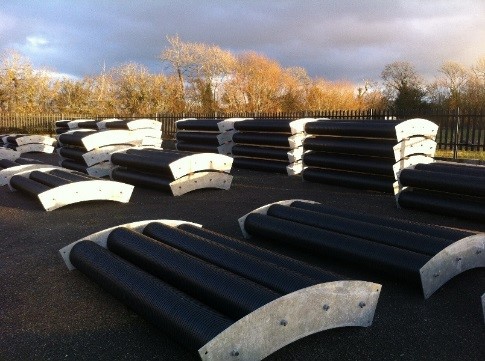
The system also contains a fixed film element of treatment due to the specific construction of the media discs on the aerator pipes in the wheel. Therefore this system is a true hybrid system of activated sludge and fixed film in which the activated sludge dominates. For this reason, the system can operate at higher efficiencies than conventional activated sludge processes resulting in lower power consumption.
The wheels are manufactured in segments in our offsite facilities and assembled quickly onsite to avoid disturbances and reduce the overall cost and time required.
The basic construction of the wheel is a central shaft and a steel cage structure which transfers the forces directly to the bearings and thus the central shaft is significantly less stressed.
The pipes are formed by joining discs into cylinders, with pipes specially arranged to create the Stahler Wheel.